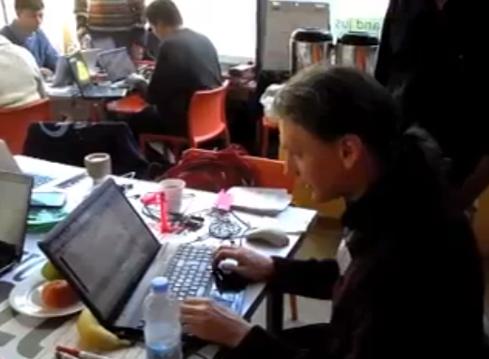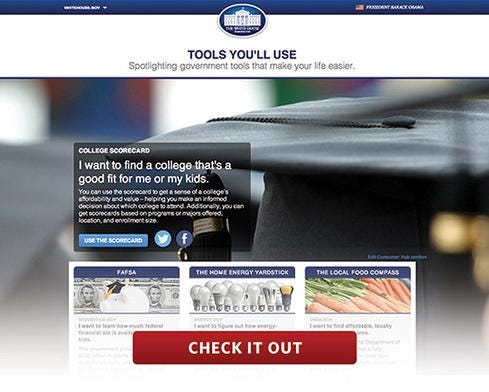More than 8,000 participants around the world tackled 40 separate challenges addressing issues humanity faces on Earth and in space.


5 Online Tools Uncle Sam Wants You To Use
5 Online Tools Uncle Sam Wants You To Use (Click image for larger view and slideshow.)
An app that provides telescope coordinates of celestial events, an Internet-connected spacesuit, and an ultra-portable satellite tracking station are among the winners of NASA's International Space Apps Challenge, the space agency announced this week.
During the annual hackathon, held over three days in April, teams of technologists, scientists, entrepreneurs, and students collaborated globally to come up with solutions to challenges in space exploration and life on Earth.
More than 8,000 participants tackled 40 separate challenges that covered five main themes: Earth watch, technology in space, human spaceflight, robotics, and asteroids. They worked with more than 350 data sources -- including data sets, data services, and tools -- to develop software, hardware, data visualizations, and mobile or Web applications.
[NASA reveals its latest prototype of the "Z" series spacesuit, designed for humans to walk on Mars by the 2030s: NASA's Next Spacesuit: Mars Fashion.]
"The International Space Apps Challenge is an opportunity for NASA to leverage our massive datasets, as well as open source technology, to invite citizens around the world to create new solutions to the issues humanity faces on Earth and in space," NASA deputy CIO Deborah Diaz said in an email. "Individuals at each location form project teams based on shared interests and diverse talents, resulting in novel outcomes that we, at NASA, may not have considered in-house."
This year's teams created crowdsourced data collection apps that measure gravity on Earth and various aspects of wetlands, fire hazards, tree health, and air quality, as well as apps that provide data about stars, planets, satellites, and asteroids. They built hardware such as a weather rover to collect urban environmental data.
Here are the five international winners in each category:
SkyWatch won for the best use of data. The Toronto team created a SkyWatch app, which provides a visual representation of data collected from observatories around the world in near real-time. It uses telescope coordinates of celestial events and plots the location through Google Sky.
Android Base Station won for best use of hardware in a PhoneSat challenge. The London team transformed a smartphone into a WiFi hotspot by connecting to satellites using a 3D-printed receiver. The end result was an automated, ultra-portable satellite tracking station. NASA has been experimenting with PhoneSats as a lower-cost alternative to traditional satellites.
Aurora Wearables was chosen as the best mission concept for an Internet-connected spacesuit designed for use on the International Space Station (ISS) and in other missions. The spacesuit was the result of collaboration among artists, fashion designers, technologists, and software developers. NASA recently revealed another concept for a next-generation spacesuit that could be worn on Mars.
The Yorbit team from Kansas City was crowned "most inspiring" for creating a tool that allows users to search, personalize, and share photos from NASA satellites orbiting Earth. Users can choose images from maps and write messages on the images to share with friends via social media.
Another London team developed SkySnapper, an online service that lets anyone measure air quality by taking photos of the sky. All the public needs to participate is a smartphone or camera and an Internet connection. The service maps the crowdsourced sky images to monitor progress over time.
"Because these projects are open source, anyone can use them as a jumping off point for innovative endeavors," said Diaz. "NASA hopes to learn from the very best thinking we see bubble up through space apps and other NASA challenge programs, and hopefully use these solutions as a new way forward to reach beyond the stars."
Our InformationWeek Elite 100 issue -- our 26th ranking of technology innovators -- shines a spotlight on businesses that are succeeding because of their digital strategies. We take a close at look at the top five companies in this year's ranking and the eight winners of our Business Innovation awards, and we offer 20 great ideas that you can use in your company. We also provide a ranked list of our Elite 100 innovators. Read our InformationWeek Elite 100 issue today.
About the Author(s)
You May Also Like







